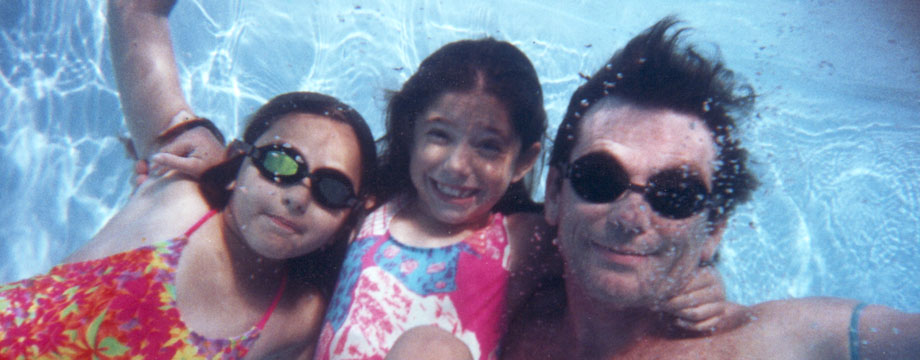When learning the front crawl (“freestyle”), learning to breathe comfortably takes a lot of practice. You have choices on when to breath. The two most common methods are:
- One breath per every arm cycle.
- One breath for every three arm strokes (alternate bi-lateral breathing).
Various books and videos will espouse one method as superior. Which one is best? Please understand that much of this is driven by the best methods for competition, where not breathing is the fastest way to swim! In competition, especially the sprint races, swimmers my only take a few breaths per length! So for the average fitness swimmer, this question might be better stated as “which one is best for you?” Every swimmer is different in body size, aerobic fitness, strength, coordination, and motivation.
Bi-Lateral breathing
Experts are in agreement on one point: It’s best to learn to breathe on both sides, i.e “bi-laterally.” Since the front crawl stroke is not symmetric, different motions and muscles come into play during the stroke cycle. For practice, it’s good to swim a whole length or more breathing to one side, then switching to the other so you do the same yardage for each side. This is easier than trying to master breathing every third stroke—that is a more difficult technique not necessary to swim efficiently!
Being able to breath on either side has several advantages:
- It helps to keep the body in a state of “balance”. That is, by using left and right side breathing, your muscles will get the same workout.
- In pool competition, you can choose to look at a competitor for multiple laps.
- In open water swimming, you can breath on the side where waves and/or the sun cause the least discomfort.
Respiration rates have priority
Your respiration (breathing) rate varies according to the level of exercise. For adults the typical resting rate is 15 breaths per minute, increasing to 40 – 50 breaths per minute as exercise intensity increases. The body has two ways to increase the oxygen supply:
- Increase the ‘tidal volume’ (the quantity of air that is inhaled and exhaled with every breath).
- Increase in the respiration or breathing rate (bpm). This is the number of inhalation and exhalation cycles per minute.
Let’s use an example based on moderate, sustainable, aerobic swimming.
Suppose Mary swims 25 yds. in 30 seconds (light to medium exercise, depending on her overall fitness). During 30 seconds, she takes 26 strokes (13 pulls with each arm). Based on this, what are the respiration rates for the two breathing methods?
Alternate/bi-lateral method:
The stroke rate is 1 pull for every 0.87 s. (26 pulls/30 s.). Three pulls will take about 2.6 seconds (3 x 0.87s). This results in a respiration rate of about 23 bpm (60/2.6). This is slightly above the normal resting rate.
One breath per cycle method:
Two pulls will take 1.74 s. (0.87 x 2). This works out to 43 bpm (60/1.74), which is in low end of the 40-50 “exercise” range.
Which method should Mary use? If she uses the alternate bi-lateral technique, she may not get enough air to match her exertion level. This obviously depends on her fitness level, etc., but the one breath per cycle is probably a better fit in this case. Sometimes, the swimmer may be concerned about hyperventilating at the higher rate, but with practice, the body will adjust the tidal volume to match the needs.
This analysis is based on a pace that you should be able to swim for extended periods of time. After several hundred yards, you should not be exhausted, and should feel that your breathing and effort “match up”, and that you can swim at this pace almost indefinitely. Sprinting and racing require a totally different analysis, which varies according to the racing distance, water conditions (open vs. pool), and more.

